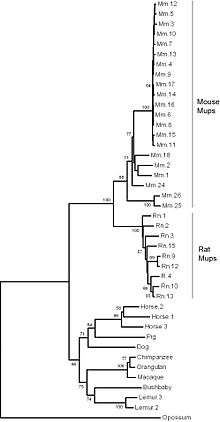Latest News for: gene family
Edit
Heart health: Optimize lifestyle, keep an eye on your numbers
Chatanooga Times Free Press 13 Apr 2025
That looks like going for a walk, and it doesn't all have to be at one time, but you could go for a walk at lunch, and then you could take a walk with your family in the evening ... For instance, there's a cholesterol molecule that runs in families.
Edit
Calhoun grad McCartney Kessler’s rise on WTA Tour helped by brother McClain, Baylor boys' tennis coach
Chatanooga Times Free Press 11 Apr 2025
Edit
Should you get Prenatal Genetic Testing done? Here's what you need to know
The Times of India 11 Apr 2025
Carrier screening, for example, can identify individuals who carry genes for certain genetic disorders, enabling parents to make informed choices about family planning.
Edit
Top 5 causes of hair fall in men
The Times of India 10 Apr 2025
Family history (Genetics)If there’s a family history ... Inheritance of genes from one generation to another, wherein there is a family history, can increase the risk of hair fall in younger generations.
Edit
Yogurt — the next superfood?
Taipei Times 09 Apr 2025
But what role does yogurt actually play in longevity?. By Bianca Nogrady / The Guardian ... LIFESTYLE AND GENES ... Branyas didn’t smoke or drink alcohol, she exercised regularly, and spent lots of quality time with friends and family. And she had good genes ... .
Edit
Obituary: Generoso “Gene” Bay
The Brunswick Times Record 08 Apr 2025
GORHAM - Generoso "Gene" Bay, 77, of Gorham, passed away peacefully, surrounded by family on April 3, 2025, at Northern Light ... .
Edit
Full list of extinct animals being brought back to life by scientists after dire wolf ...
The Daily Mail 08 Apr 2025
'This is exciting to us because it confirms that the genes and gene families that we identified using our comparative genomics approach really do cause an animal to have a woolly coat and a golden coat and longer hairs,' she said.
Edit
FBI, Florida probing Collier County permit fraud. Plans had stamp of ex-architect with dementia
Naples Daily News 08 Apr 2025
Edit
I went searching for the grandmother I never met. Under a tree where she once sat with Leonard Cohen, I broke
The Observer 06 Apr 2025
Her wild genes ... Her wild genes pushed at her to be more than a mother and a wife ... She had chosen a family instead ... Sue had given up the siren pull of her wild genes for a life of family, security, safety. And now those wild genes had come to claim her.
Edit
This is how we do it: ‘Trying for a baby has improved our sex life – we’re more adventurous’
The Observer 06 Apr 2025
Edit
Readers and writers: Haunting tale set in Lake Superior lighthouse is must-read
Pioneer Press 06 Apr 2025
The author introduces people such as canoe-racing legend Gene Jensen and members of the Native American Tibbetts family from the Leech Lake reservation, as well as telling the history of how canoes ...
- 1
- 2
- Next page »



